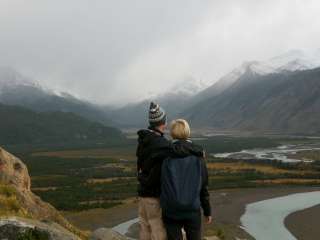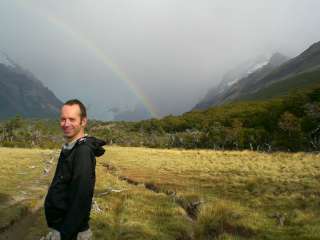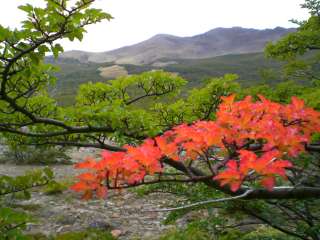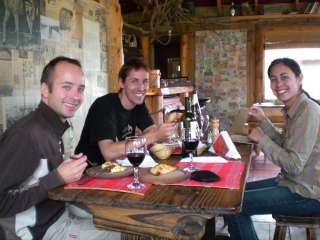The Beaten Path
There’s kind of a “set route” for tourists in Patagonia. People generally come to this part of the planet in order to be outside and see glaciers, and the people that live in the towns of Souther n Argentina have everything ready for us. The starting point for us (and piles of other people) is El Calafate, a town of 18,000 people on the shore of a windy, glacial – and what must be terribly cold in the winter – Lake Argentino. On a clear day, with the Andes sparkling in the background, and the lake reflecting some perfect version of cloudy aquamarine, it reminds me of a blend of Banff and Lake Louise. I felt so at home here, and not just because of the steak nor the quaint stores and chocolate shops on Main Street nor the chilled air or fresh breeze, it was the people that reminded me of home. Half-tourist, half-outdoor folk, with a lot of hotels and restaurants to keep us all mingling.
n Argentina have everything ready for us. The starting point for us (and piles of other people) is El Calafate, a town of 18,000 people on the shore of a windy, glacial – and what must be terribly cold in the winter – Lake Argentino. On a clear day, with the Andes sparkling in the background, and the lake reflecting some perfect version of cloudy aquamarine, it reminds me of a blend of Banff and Lake Louise. I felt so at home here, and not just because of the steak nor the quaint stores and chocolate shops on Main Street nor the chilled air or fresh breeze, it was the people that reminded me of home. Half-tourist, half-outdoor folk, with a lot of hotels and restaurants to keep us all mingling.
Anyway, the next stop on the tourist route is El Chaltén. It’s a four-hour bus ride (full of tourists) north towards another glacial lake in the area, to a town founded in 1985 only to keep Chile from annexing the area. It’s wee. A wee, expensive village and it exists in what must be the windiest corridor of the Andes.  In the three days we were there, the sun shone for approximately five minutes, and the rest of the time it was either grey sky with gale force winds or rainy or both. Mostly both. However, with such a short time there, we couldn’t afford to wait for the weather and so we set out with a woman we met from Iowa and a fellow from Sydney to see Cerro de Torre. It turned out to be a lovely hike through forested area, which kept the wind and rain at bay, and we come upon some gorgeous views…
In the three days we were there, the sun shone for approximately five minutes, and the rest of the time it was either grey sky with gale force winds or rainy or both. Mostly both. However, with such a short time there, we couldn’t afford to wait for the weather and so we set out with a woman we met from Iowa and a fellow from Sydney to see Cerro de Torre. It turned out to be a lovely hike through forested area, which kept the wind and rain at bay, and we come upon some gorgeous views…

…but we didn’t see what we were supposed to see as a reward for hiking for 3 hours. Some mountain and a glacier, I guess.
The next day, after thawing our hands and feet, we climbed through the mountains to see Mount Fitzroy, an icon of the Argentinian Andes. Didn’t see it. Had to turn back 30 minutes from the end due to lack of visibility due to sleet. At least there was a micro-brewery in town in which we could sit out the stormy weather. 
We later learned that the morning we left, it cleared right up and they had the best weather they’ve had all season. Great.
The next two places people go in Patagonia are Ushuaia, the southern-most city on the planet (that’s all it does), and Torres del Paine, which is another iconic mountain region but it belongs to Chile. We skipped Torres del Paine (it was expensive, and its name in English sounds like ‘pain’) and we were going to skip Ushuaia, but had to connect through that city in order to fly north back to Buenos Aires. I don’t know how we ended up on that extra long flight but at least now we can say we’ve been as far south as any human is willing to live.